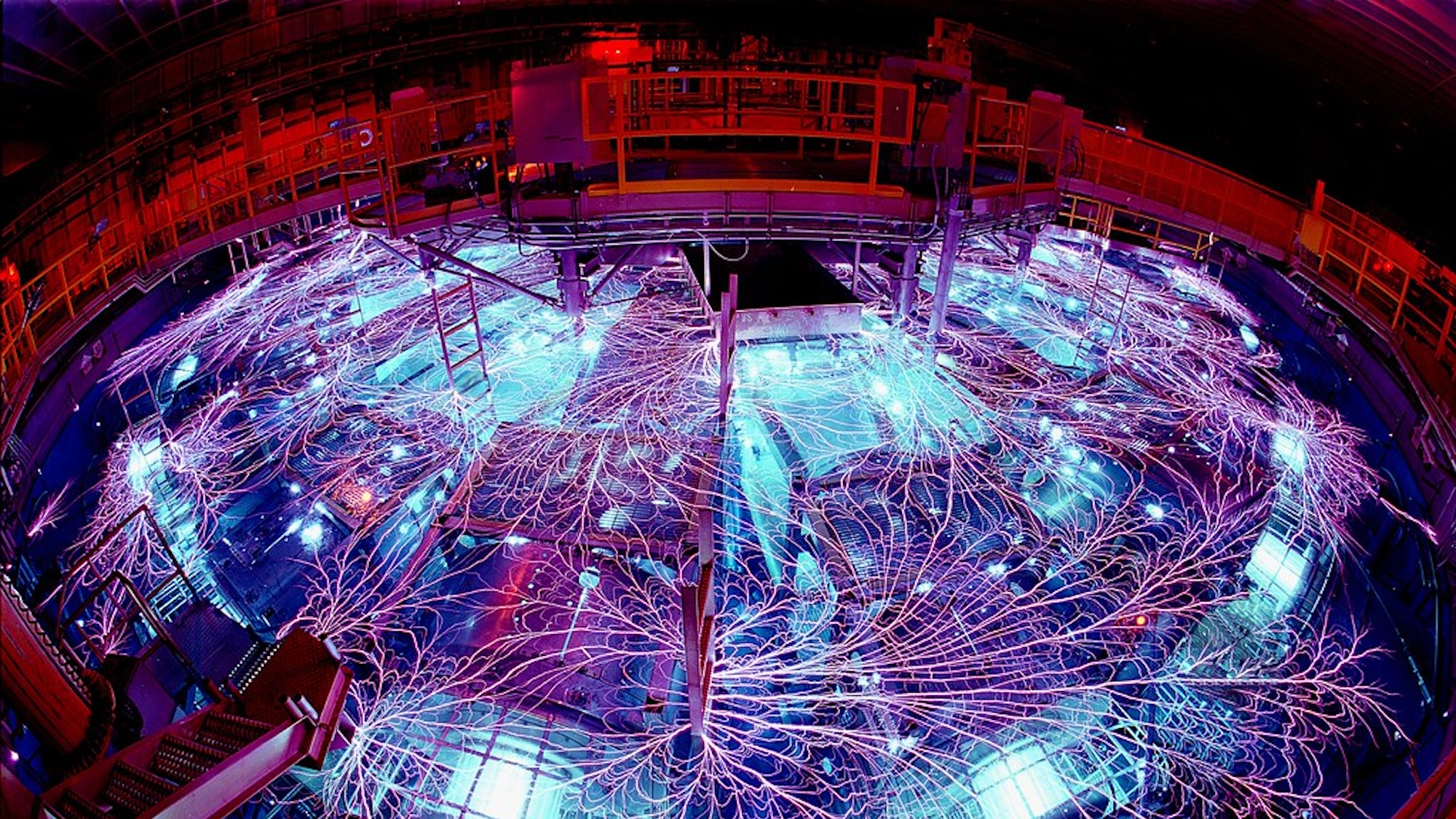

There are many theories on how to best handle a rare (but possible) cataclysmic asteroid collision with Earth. Effectively testing these possible solutions against actual space rocks, however, is complex, costly, and takes years to achieve. Now, researchers believe they created an easier way (relatively speaking) to assess one of the most dramatic proposals: deploying a nuclear bomb. To pull off their recent experiments, a team at Sandia National Laboratories devised a new tool they call “X-ray scissors.”
In 2022, NASA’s Double Action Redirection Test (DART) mission successfully altered an asteroid’s trajectory after slamming a spacecraft into the roughly 560-foot-wide rock at 13,000 mph. While a major moment in researching contingency plans for deflecting catastrophic Earthbound asteroids, the overall project wasn’t cheap. All told, the mission cost around $324.5 million to complete. This means that planning numerous repeat performances isn’t a feasible strategy to further study asteroid deflection. But if you could simulate an asteroid, its surroundings, and nuclear blast forces in a lab, then that would make many model experiments possible.
[Related: What would we do if an asteroid slammed Earth on July 12, 2038?]
To approximate a nuclear detonation, a team led by Sandia National Laboratories physicist Nathan Moore relied on the institution’s room-sized “Z machine,” the world’s strongest pulsed-power device. As National Geographic explains, once the Z machine is activated, argon gas receives a huge blast of electricity causing it to explode into super hot plasma similar to the surface of the Sun. This plasma also creates megajoule-sized bursts of X-ray radiation, similar to a nuclear detonation in space. The cumulative effect is so powerful that the Z machine can melt diamonds.
Moore’s team theorized that placing a miniature asteroid imitation inside the target chamber could simulate much larger space rock scenarios involving actual nukes. But there’s just one persistent problem on Earth—gravity.
“[A]steroids in outer space aren’t attached to anything. But in a lab, everything is pulled down by Earth’s gravity, so everything is held in place by its gravitational attachment to something else,” Moore explained in a September 23 announcement. What’s more, gravity prevents any model asteroids from accurately moving as they would in space, while any mechanical attachments generate friction.
Moore and colleagues call their workaround “X-ray scissors.” First, researchers suspended 0.1 g of silica in the Z machine’s target chamber using a piece of foil roughly eight times thinner than a single human hair. That ultrathin anchor immediately vaporized as the Z machine fired its X-ray burst. For the briefest of moments, the unsuspended silica sample existed in a free-floating state without any gravitational influences.
[Related: 5 ways we know DART crushed that asteroid (but not literally)]
“For a one-nanometer fall, we can ignore Earth’s gravity for 20 millionths of a second as Z produces a burst of X-rays that sweeps over the mock-asteroid surface 12.5 millimeters across, about the width of a finger,” said Moore.
In that 20 millionths of a second, extremely sensitive equipment measured the silica stand-in’s impact force and velocity, which the team then plugged into a model capable of simulating exponentially larger asteroids and nuclear forces. The results were published in the September 23 issue of Nature Physics, and showcase the early stages in the establishment of a library of nuke-like effects on scale model asteroids. From there, computational modeling may soon help experts run dozens of asteroid deflection trials without the need for actual asteroids, nuclear weapons, or rocketry.
There is still a long way to go before researchers consider launching nuclear bombs at incoming asteroids a viable solution to stave off impending doom—and there’s reason to believe it may never become a realistic solution. Asteroids aren’t only composed of silica, but an array of different minerals. Sometimes, they aren’t even a single rock, but a group of many smaller debris pieces stuck together through their collective gravitational pull. All of these variables need to be studied and addressed before hurling a giant bomb into space. But the Z machine and its X-ray scissors possibly provide a first step towards such a future.
“To most people, the danger from asteroids seems remote,” said Moore. “But our planet is hit by BB-sized asteroids every day. We call them shooting stars. We don’t want to wait for a large asteroid to show up and then scramble for the right method to deflect it.”
